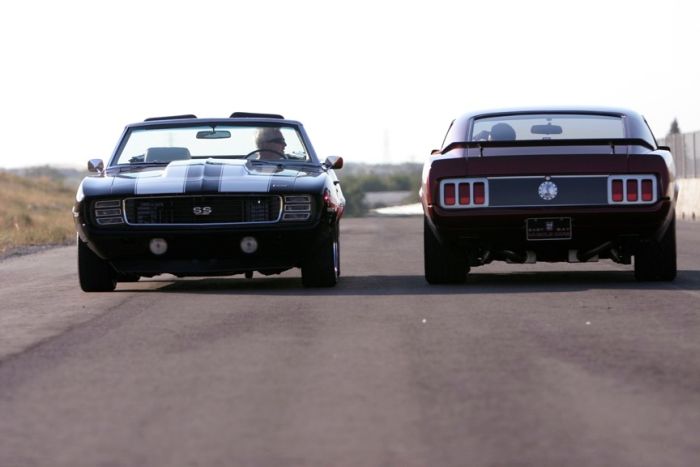|
|
American Automobile Industry
|
Pony cars were introduced with the Ford Mustang in 1964 This car combined sporty looks with a long hood, small rear deck and a small rear seat. The car proved highly successful and imitators soon arose, such as the Chevrolet Camaro, Pontiac Firebird, Dodge Challenger, Plymouth Barracuda (actually introduced two weeks prior to the Mustang), Mercury Cougar and AMC Javelin. Muscle cars were also introduced in 1964 with the Pontiac GTO. This car combined an intermediate-sized body with a large high-output engine. Competitors were also quickly introduced, including the Chevrolet Chevelle SS, Dodge R/T (Coronet and Charger), Plymouth Road Runner / GTX, Ford Torino and AMC AMX. Muscle cars reached their zenith in the late 1960s, but soon fell out of favor due to high insurance premiums along with the combination of emission controls and high gas prices in the early 1970s.
While the pony and muscle cars got most of the attention, the full sized cars formed the bulk of auto sales in the 1960s, helped by low oil prices. The styling excesses and technological gimmicks (such as the retractable hardtop and the pushbutton automatic transmission) of the 1950s were de-emphasized. The rear fins were downsized and largely gone by the mid-1960s, as was the excessive chrome.
• Federal regulation of the auto industry
Safety and environmental issues during the 1960s led to stricter government regulation of the auto industry. This resulted in higher costs and eventually to weaker performance for cars in the 1970s. Seat lap belts were mandated by many states effective in 1962. Federal Motor Vehicle Safety Standards initiated in 1968 required shoulder belts for front passengers, front head restraints, energy-absorbing steering columns, ignition-key warning systems, anti-theft steering column/transmission locks, side marker lights and padded interiors. Beginning in 1972, bumpers were required to be reinforced to meet 5-mph impact standards. With the Clean Air Act, emission controls began being instituted in 1968. The use of leaded gasoline began being curtailed in the early 1970s, which resulted in lower-compression engines being used, and thus reducing horsepower and performance. Catalytic converters began being widely used by the mid-1970s.
|
|









